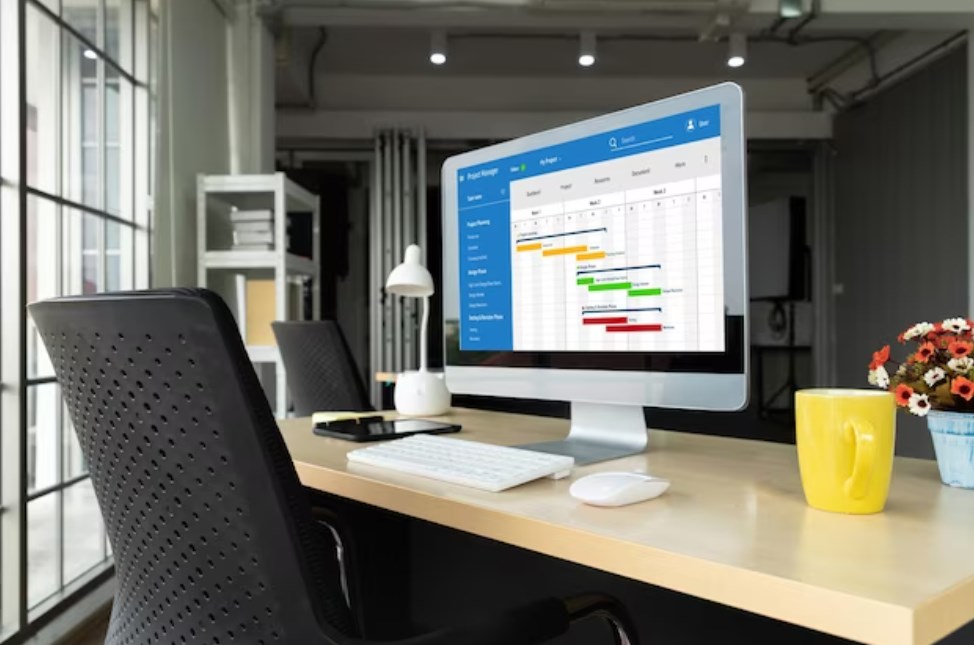In today’s digital era, where mobile browsing is prevalent, ensuring that web tables adapt seamlessly across various devices is crucial. This article delves into the art of creating visually appealing and functional tables using CSS, focusing on responsive design principles.
With an emphasis on structure and aesthetics, we explore techniques to ensure that your tables are not only informative but also engaging, regardless of the screen size.
Ensuring Table Responsiveness
Creating a table that is both informative and visually pleasing can be challenging, especially when considering different device sizes. This section offers practical advice and techniques to enhance your table’s design, making it responsive and appealing across all devices.
Text Wrapping for Mobile Adaptability
One straightforward method to ensure table readability on smaller screens is by implementing text wrapping. This technique prevents words from extending beyond the screen, particularly beneficial for compact tables. Utilize the word-break property for effective wrapping:
table {
word-break: break-all;
}Horizontal Scrolling for Extensive Data
When dealing with tables containing numerous columns, introducing horizontal scrolling can be a game-changer. Encapsulate your table within a container and set the overflow property to auto, creating a scrollable area when the content exceeds the container’s width:
<div class="scroll-container">
<table>
<!-- Table Content -->
</table>
</div>
.scroll-container {
overflow: auto;
}Enhance this approach by making the first column sticky, providing a constant reference point as users scroll horizontally:
.scroll td:first-of-type {
position: sticky;
left: 0;
/* Additional styling */
}Adaptive Table Layout for Various Screens
Achieve a fully responsive table by altering its layout based on screen size. Define a head for each column and assign a data-label attribute to each cell. This method is particularly effective for enhancing mobile viewing:
<table class="responsive">
<!-- Table Head and Body -->
</table>For smaller screens, hide the column titles and use the ::before pseudo-element to display cell labels:
@media screen and (max-width: 600px) {
.responsive thead {
/* Hide column titles */
}
.responsive td::before {
/* Display cell labels */
}
}Tips for Optimizing Mobile Table Design
Creating responsive tables requires more than just technical know-how; it also involves understanding user experience and design principles. Here are some key tips to enhance your tables:
- Prioritizing Crucial Data: Focus on displaying essential information, removing any superfluous data;
- Data Abbreviation and Icon Usage: Implement abbreviations and icons for a cleaner, more understandable layout;
- Eliminating Repetitive Elements: Streamline your table by removing unnecessary repetitions;
- Highlighting Key Information: Use design elements to draw attention to important data;
- Adaptive Column Organization: Consider stacking or wrapping columns for better mobile readability.
Practical Demonstrations
To grasp these concepts fully, exploring practical examples is invaluable. Visit CodePen to see these techniques in action, showcasing how each approach is implemented and how it enhances the user experience.
Enhanced Styling Strategies for Adaptive Data Presentations
When delving deeper than just basic adaptability, employing sophisticated styling techniques can drastically elevate both the visual appeal and practicality of data presentations on diverse devices:
- Tailored Scrollbars for Improved Navigation: Crafting scrollbars that align with your website’s design theme enhances the navigational experience significantly. This personal touch not only boosts aesthetics but also fosters a smoother scrolling experience for users;
- Dynamic Styling Based on Data Attributes: Implement CSS-based dynamic styling to add a layer of interactivity to your data display. By changing styles in response to specific data attributes or conditions, you engage users with a more responsive and interactive interface;
- Incorporating Subtle Motion for Interactivity: Embedding gentle animations and transitions can transform user interactions with your data. These visual cues not only captivate attention but also make the navigation through data more intuitive and engaging.
Utilizing CSS Flexbox and Grid for Advanced Data Structures
For crafting advanced and adaptable data layouts, CSS Flexbox and Grid systems stand out as highly effective tools. Each offers unique capabilities to enhance your data’s presentation:
- Flexbox for Fluid Item Alignment and Distribution: Flexbox excels in providing a versatile framework for aligning and distributing elements within a container. Its flexibility is key in creating layouts that adapt effortlessly to varying screen sizes, ensuring data is presented clearly and coherently;
- CSS Grid for Intricate Data Arrangement: With CSS Grid, you can achieve more complex, grid-based layouts. This system is ideal for organizing data into distinct rows and columns, offering precise control over the structure and spacing of your data elements;
- Mastering Nested Data Structures: Utilizing these tools, especially CSS Grid, enables efficient management of nested data structures. This approach is invaluable when dealing with complex data arrangements where clarity and organization are paramount.
By integrating these advanced CSS techniques into your web design, you can significantly enhance the user experience, ensuring that your data is not only accessible and legible across various devices but also presented in a visually appealing and engaging manner.
In our next article, explore the use of viewport widths in CSS to create even more responsive designs.
Implementing Fluid Layouts for Data Display
In the quest for optimal web design, adopting fluid layouts is pivotal for presenting complex data sets across various devices. Fluid layouts use percentages and relative units instead of fixed measurements, ensuring that the data structure adapts smoothly to different screen sizes. This approach is particularly effective in maintaining readability and usability without compromising the integrity of the information displayed. Here’s how to achieve this:
- Utilizing Percentage-Based Widths: Set column widths in percentages rather than pixels. This ensures that each column adjusts its size relative to the screen width, maintaining proportion and readability;
- Embracing Relative Units for Font Sizes: Employ ’em’ or ‘rem’ units for font sizes. These relative units scale the text size based on the parent element or root font size, ensuring text remains legible on all devices;
- Creating Flexible Containers: Design your data containers to be fluid by using max-width and min-width properties. This prevents the layout from breaking at extreme sizes while allowing it to expand or contract gracefully.
Enhancing Data Visualization with Advanced CSS Techniques
To further elevate the user experience, advanced CSS techniques can be employed to enhance the visual appeal and interactivity of data presentations. These methods go beyond basic layout adjustments, offering an engaging and intuitive way to interact with data:
- CSS Grid for Complex Structures: Leverage CSS Grid to create intricate and flexible data structures. This allows for more creative layouts and better control over data positioning, especially for complex sets of information;
- Interactive Elements with CSS Pseudo-Classes: Utilize pseudo-classes like :hover and :focus to add interactive elements to your data. This can include highlighting a row or column when hovered over, providing a more interactive experience for the user;
- Incorporating Shadows and Borders for Depth: Add depth to your data presentation with subtle use of box shadows and borders. This not only enhances aesthetics but also helps in differentiating sections of data, making it easier to read and understand.
These additional techniques, when applied thoughtfully, can significantly boost the effectiveness and user engagement of your web designs, ensuring that complex data is not only accessible but also appealing across different platforms and devices.
Conclusion
Throughout this article, we’ve explored various strategies and techniques for creating responsive tables using CSS. From simple text wrapping to advanced layout adjustments with media queries, these methods ensure your data is presented clearly and attractively on any device. By applying these techniques, you can enhance the usability and aesthetic appeal of your web designs, catering to a broad audience of mobile and desktop users alike.



